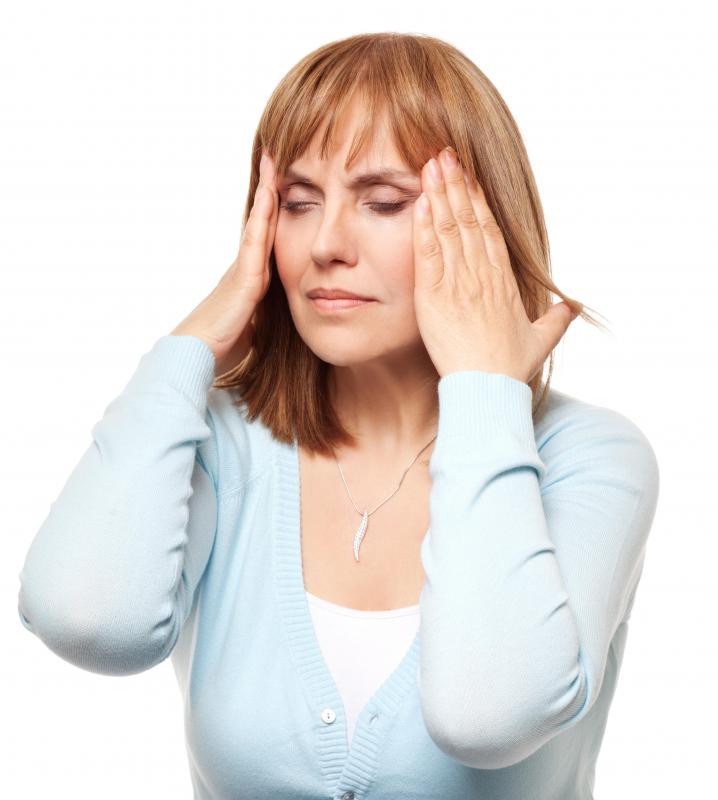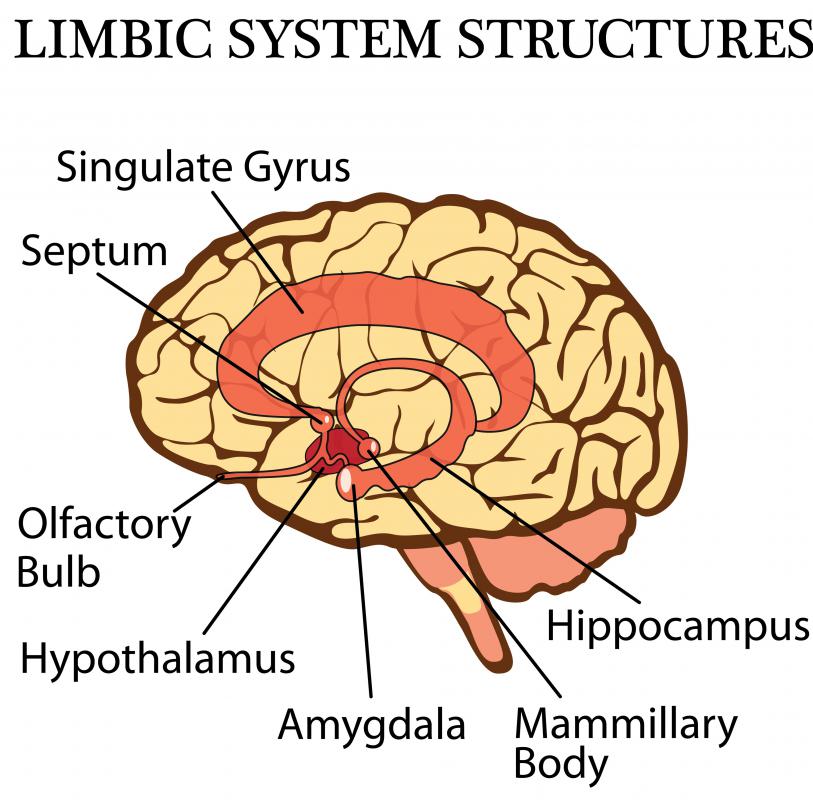At WiseGEEK, we're committed to delivering accurate, trustworthy information. Our expert-authored content is rigorously fact-checked and sourced from credible authorities. Discover how we uphold the highest standards in providing you with reliable knowledge.
What is Cephalalgia?
Cephalalgia is a pain in the head that is commonly referred to as a headache. Common types of cephalalgia include primary headaches such as tension and cluster headaches. Secondary headaches generally develop as a result of underlying medical conditions in a patient’s head or neck. Cephalalgia symptoms may vary among patients, depending on the type of headache a patient develops.
Tension headaches are a very common type of cephalalgia, and these headaches affect many adults. A tension headache may be caused by contraction of muscles over the skull as a result of physical or emotional stress, although the causes of some cases of this type of cephalalgia are not known. In most instances, tension headaches begin with pressure in the rear of the head and upper portion of the neck. This pressure typically encircles the entire head and can be particularly intense above the eyebrows. Most people experience pain that is not disabling and affects both sides of the head.

Physicians usually diagnose tension headaches according to patient symptoms and medical history. Many individuals self-treat their tension headaches with over-the-counter pain medications such as ibuprofen, acetaminophen or aspirin. People who take pain medications regularly may develop rebound headaches, a type of tension headache that is caused by withdrawal from a pain medication. Some individuals with recurring tension headaches can benefit from therapies such as biofeedback, massage or stress-management techniques.

Cluster headaches are a form of cephalalgia that often have an unknown cause, but may originate in the brain’s hypothalamus in some instances. A cluster headache typically causes episodes of pain that last for 30 to 90 minutes and often occur once or twice a day. Pain from a cluster headache is usually behind or around an eye and may feel like a hot stabbing. An affected eye can become watery, red or inflamed. Physicians typically diagnose these headaches from a patient’s medical history and symptoms.

Many cluster headaches are associated with a trigger such as a medication or a change in sleep habits. Some people develop cluster headaches that are triggered by cigarette smoking or alcohol use. Males usually have a greater likelihood of developing a cluster headache than females. Some physicians treat cluster headache patients with oxygen therapy or an injection of a local anesthetic called lidocaine into a patient’s nostril. Doctors may prescribe drugs such as sumatriptan, rizatriptan or dihydroergotamine to treat the pain of cluster headaches.

Secondary headaches can occur as a result of of serious medical conditions and typically require diagnosis and treatment of an underlying cause. Head and neck trauma, including concussions and internal bleeding in the head, can cause some secondary headaches. Blood vessel problems such as inflamed arteries or a stroke may result in this type of cephalalgia. Brain tumors, seizures and infections such as meningitis or encephalitis can cause headaches. Hypothyroidism, high blood pressure and kidney disorders may also contribute to the development of secondary headaches.
AS FEATURED ON:
AS FEATURED ON:

















Discuss this Article
Post your comments